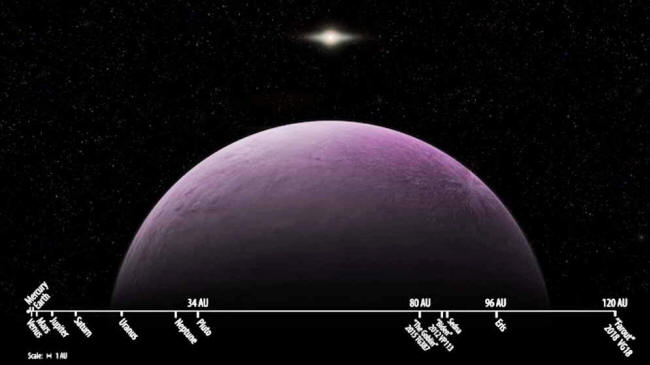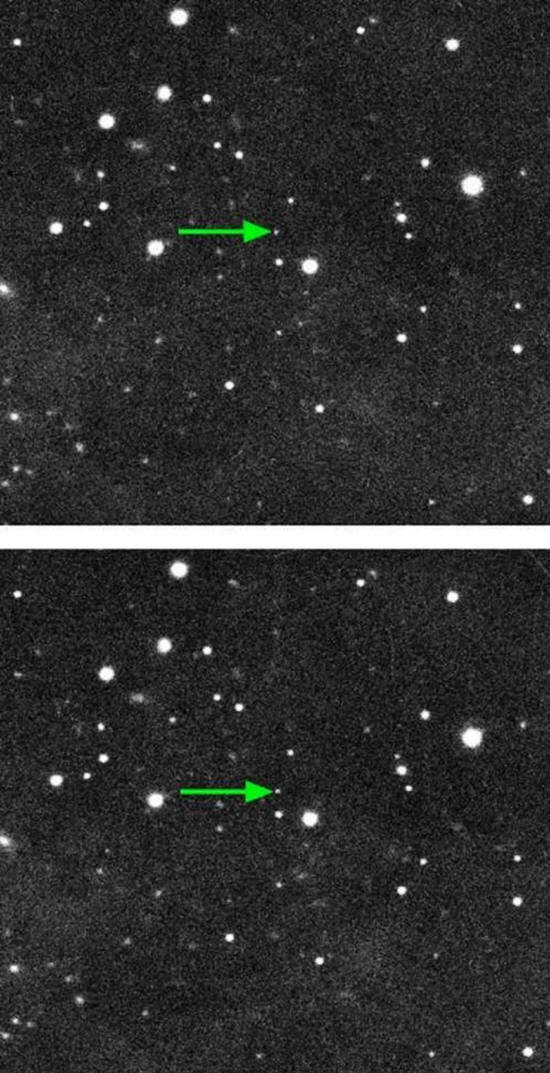|
December 19, 2018 from PopSci Website
with a
scale of other Solar System objects.
Carnegie Institution for Science.
It's the farthest object we've ever spotted in our neighborhood.
For reference, Pluto - commonly introduced to students as one of the most distant planetary objects in the solar system - is a measly 34 AU away, hardly scratching our cosmic neighborhood's outer fringes.
2018 VG18 also beats out Eris, the dwarf planet infamous for inspiring Pluto's status demotion, which previously held the record at 96 AU from the sun.
The
Voyager 2 spacecraft, which just
exited the
heliosphere (though not the solar
system itself) is about the same distance as 2018 VG18. Our sun's
most distant orbiting comets, which mark the
edge of the system, reach some 50,000 AU away.
The object was
re-observed just this month, using the
Magellan telescopes at Carnegie's
Las Campanas Observatory in Chile.
Besides its distance, the team deduced the object is about 500 to 600 kilometers in diameter (about 310 to 370 miles), takes more than a thousand years to orbit the sun, is solid, and emits a pinkish hue - generally a sign of ice irradiated by the sun's rays over billions of years.
So far, however, a formal dwarf planet label is still pending more observations, and for right now, we should think of 2018 VG18 as something like an asteroid.
Farout moves between the two discovery images while the background stars and galaxies
do not move over the one hour between images.
Of course, that doesn't mean that the team just focused some high-powered instruments to the far reaches of the solar system on a lark.
The edge of the solar system itself is about 122 AU from the sun, and there have always been signs that objects with other orbits could traverse this distant plane of space, according to Dave Tholen, an astronomer at the University of Hawaii and a co-investigator of discovery.
The team started this survey in 2012, and has covered about 20 percent of the sky to date.
Along the way, they have stumbled upon other objects like,
These discoveries are pretty neat on their own, but they may lead to a more tantalizing discovery that the astronomical community has obsessed over in last few years:
The Goblin and Biden, for
instance, have orbits that seem to be influenced by a massive object
the likes of would-be Planet X.
The advent of large digital cameras on high-class telescopes means an ability to image the sky like never before.
And if the project finally gives us confirmation that Planet X is real, so much the better.
|



